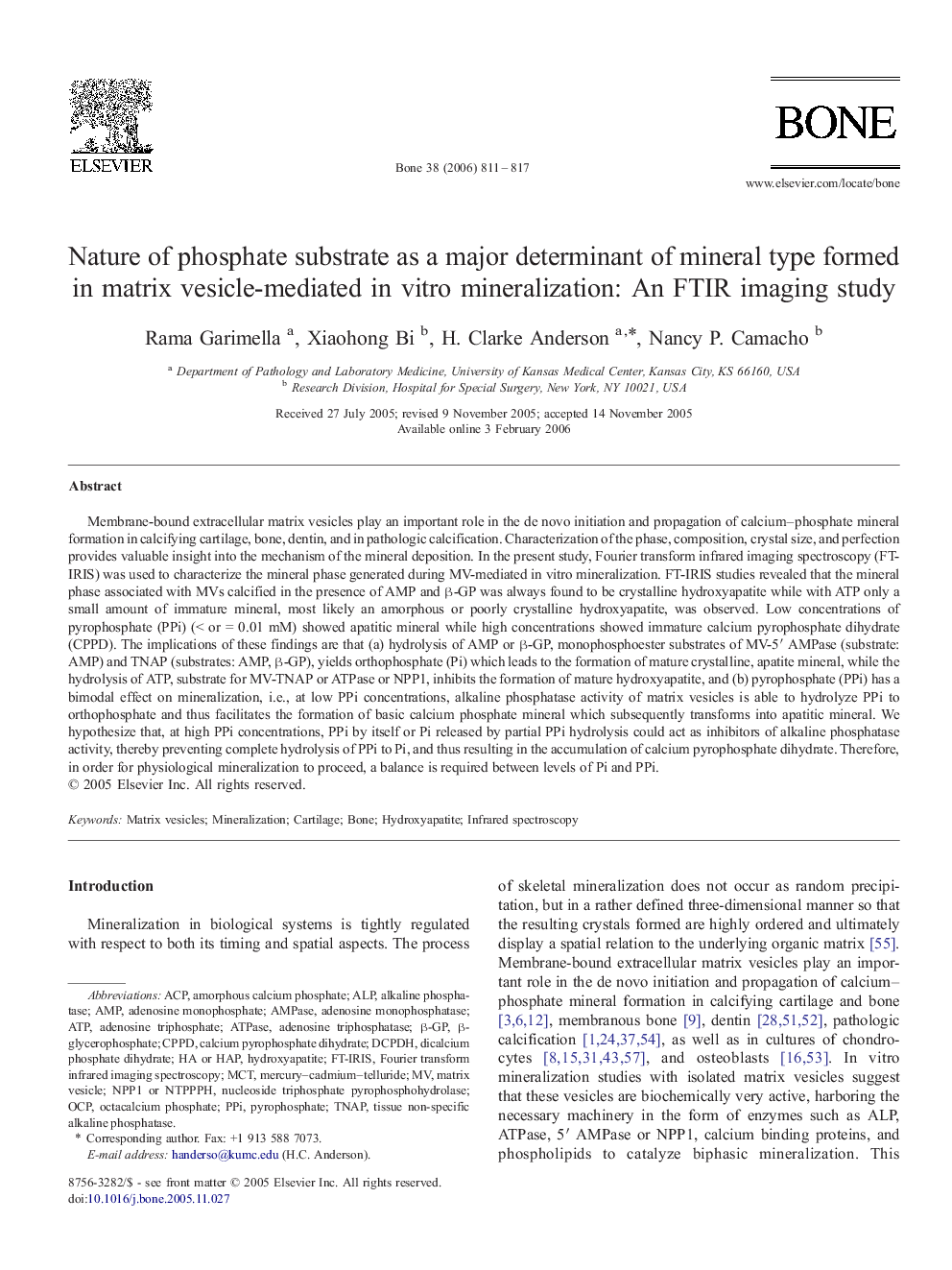| کد مقاله | کد نشریه | سال انتشار | مقاله انگلیسی | نسخه تمام متن |
|---|---|---|---|---|
| 2782775 | 1153359 | 2006 | 7 صفحه PDF | دانلود رایگان |

Membrane-bound extracellular matrix vesicles play an important role in the de novo initiation and propagation of calcium–phosphate mineral formation in calcifying cartilage, bone, dentin, and in pathologic calcification. Characterization of the phase, composition, crystal size, and perfection provides valuable insight into the mechanism of the mineral deposition. In the present study, Fourier transform infrared imaging spectroscopy (FT-IRIS) was used to characterize the mineral phase generated during MV-mediated in vitro mineralization. FT-IRIS studies revealed that the mineral phase associated with MVs calcified in the presence of AMP and β-GP was always found to be crystalline hydroxyapatite while with ATP only a small amount of immature mineral, most likely an amorphous or poorly crystalline hydroxyapatite, was observed. Low concentrations of pyrophosphate (PPi) (< or = 0.01 mM) showed apatitic mineral while high concentrations showed immature calcium pyrophosphate dihydrate (CPPD). The implications of these findings are that (a) hydrolysis of AMP or β-GP, monophosphoester substrates of MV-5′ AMPase (substrate: AMP) and TNAP (substrates: AMP, β-GP), yields orthophosphate (Pi) which leads to the formation of mature crystalline, apatite mineral, while the hydrolysis of ATP, substrate for MV-TNAP or ATPase or NPP1, inhibits the formation of mature hydroxyapatite, and (b) pyrophosphate (PPi) has a bimodal effect on mineralization, i.e., at low PPi concentrations, alkaline phosphatase activity of matrix vesicles is able to hydrolyze PPi to orthophosphate and thus facilitates the formation of basic calcium phosphate mineral which subsequently transforms into apatitic mineral. We hypothesize that, at high PPi concentrations, PPi by itself or Pi released by partial PPi hydrolysis could act as inhibitors of alkaline phosphatase activity, thereby preventing complete hydrolysis of PPi to Pi, and thus resulting in the accumulation of calcium pyrophosphate dihydrate. Therefore, in order for physiological mineralization to proceed, a balance is required between levels of Pi and PPi.
Journal: Bone - Volume 38, Issue 6, June 2006, Pages 811–817